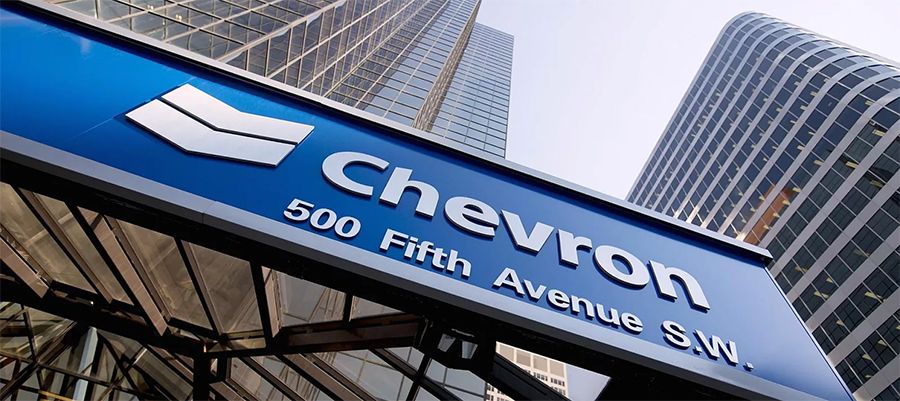
Source: PaxForex Premium Analytics Portal, Fundamental Insight
Chevron, a prominent player in the oil and gas industry, has long been recognized as a reliable dividend stock and a cornerstone of the global energy sector. Despite the inherent volatility of the energy market, characterized by fluctuating commodity prices, Chevron has consistently delivered returns to its shareholders.
However, the current landscape presents new challenges for Chevron, introducing a higher degree of uncertainty. With recent declines in oil prices and the company navigating a substantial acquisition amidst potential geopolitical complexities, Chevron's stock finds itself trading in close proximity to its 52-week lows.
This raises a crucial question for investors: should they seize the opportunity amid prevailing concerns and consider purchasing Chevron's stock? To make an informed decision, it is essential to understand the prevailing circumstances.
One significant factor contributing to the uncertainty is the downward trend in oil prices. Despite efforts by OPEC to stabilize the market by voluntarily reducing production, oil prices have been on a decline since early 2022, coinciding with the peak of inflation. Notably, the ongoing geopolitical conflicts in the Middle East, which traditionally drive oil prices higher, have not followed the expected trajectory, further adding to the complexities.
The perplexing nature of the current situation prompts investors to seek clarity on Chevron's outlook. While consumer spending remains robust, exemplified by record-setting sales on Black Friday, concerns linger about the manufacturing sector's performance. The ISM Manufacturing Index, a key indicator of US manufacturing activity, has contracted for 13 consecutive months, falling below levels observed in nine of the past 12 recessions.
Investors should be mindful that Chevron maintains operational and dividend sustainability at an average oil price of $50 per barrel. However, the recent decline in oil prices has cast a shadow on Chevron's earnings potential, contributing to a subdued market sentiment surrounding the company's stock.
Adding to the complexity is Chevron's strategic move into a significant acquisition amid the challenging oil market dynamics. The company has entered into an all-stock agreement to acquire Hess Corporation, a deal valued at $53 billion. A key driver behind this acquisition is the Stabroek block in Guyana, an offshore asset holding an estimated 11 billion barrels of oil equivalent (BBOE) in gross recoverable resources.
Hess, presently producing 110,000 barrels of oil equivalent per day in Guyana through two FPSO vessels, with additional vessels under development and potential for further expansion, presents a substantial opportunity for Chevron. The management envisions sustained production well into the 2030s, emphasizing the profitability of the Stabroek block. Notably, the production costs in Guyana were impressively low at $11.23 per barrel last year, significantly undercutting US asset production costs.
However, the acquisition is not without geopolitical challenges. Venezuela has contested the ownership of the Stabroek block, reigniting a longstanding territorial dispute. Tensions escalated to the point where the US engaged in military drills with Guyana in anticipation of potential conflict. Fortunately, recent diplomatic discussions between the two nations have led to an agreement to maintain peace.
While this diplomatic resolution is a positive development, investors should remain vigilant as geopolitical tensions can be unpredictable. Political instability, especially in the context of a massive $53 billion acquisition, raises concerns about potential disruptions to productivity in Guyana or jeopardizing the success of the merger. Monitoring the situation closely is imperative for investors to assess and manage potential risks associated with this substantial acquisition.
As Chevron's stock hovers towards the upper range of its historical price-to-book value ratio over the past decade, there's a nuanced evaluation to be made considering its recent descent from peak levels. Despite the dip, the company exhibits robust financial metrics, notably generating free cash flow equivalent to nearly ten percent of its revenue. Additionally, Chevron's return on equity is at its highest levels in the past decade, signaling a commendable operational performance.
The argument for Chevron's elevated valuation could find support in these strong fundamentals. However, the caveat lies in the vulnerability of these metrics to further deterioration if oil prices continue their downward trajectory. The positive aspect is Chevron's proactive financial preparedness for potential turbulence. The company boasts its lowest debt-to-equity ratio since emerging from the financial crisis of 2008-2009, indicating a resilient and well-structured balance sheet.
While Chevron's solid fundamentals inspire long-term confidence, the immediate future remains uncertain, given the unpredictable nature of market movements, oil price fluctuations, and geopolitical conflicts. With a prevailing trend of declining oil prices, particularly in the context of prolonged weaknesses in the manufacturing sector, short-term volatility in Chevron's share price is a plausible scenario.
As long as the price is above 146.00, follow the recommendations below:
- Time frame: D1
- Recommendation: long position
- Entry point: 151.48
- Take Profit 1: 155.00
- Take Profit 2: 160.00
Alternative scenario:
If the level of 146.00 is broken-down, follow the recommendations below:
- Time frame: D1
- Recommendation: short position
- Entry point: 146.00
- Take Profit 1: 142.00
- Take Profit 2: 137.00













